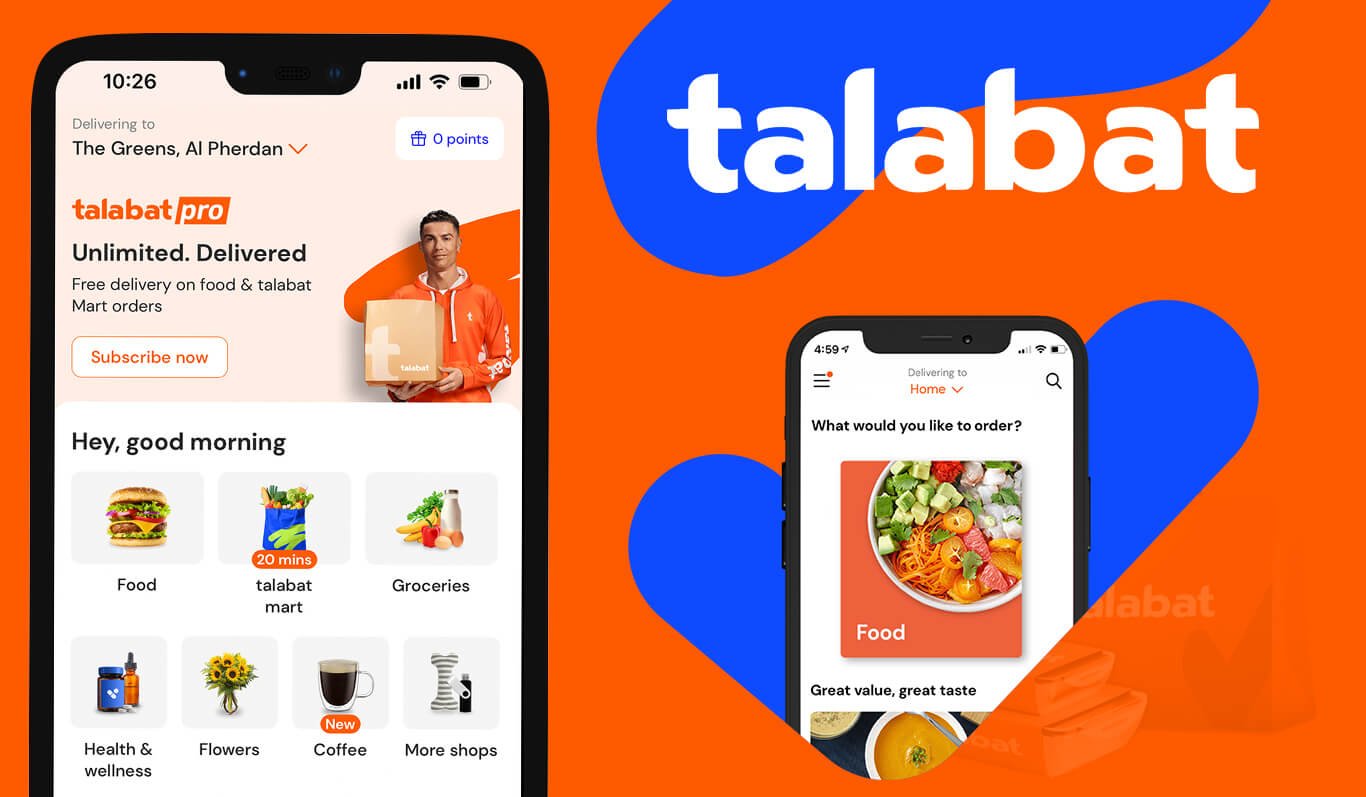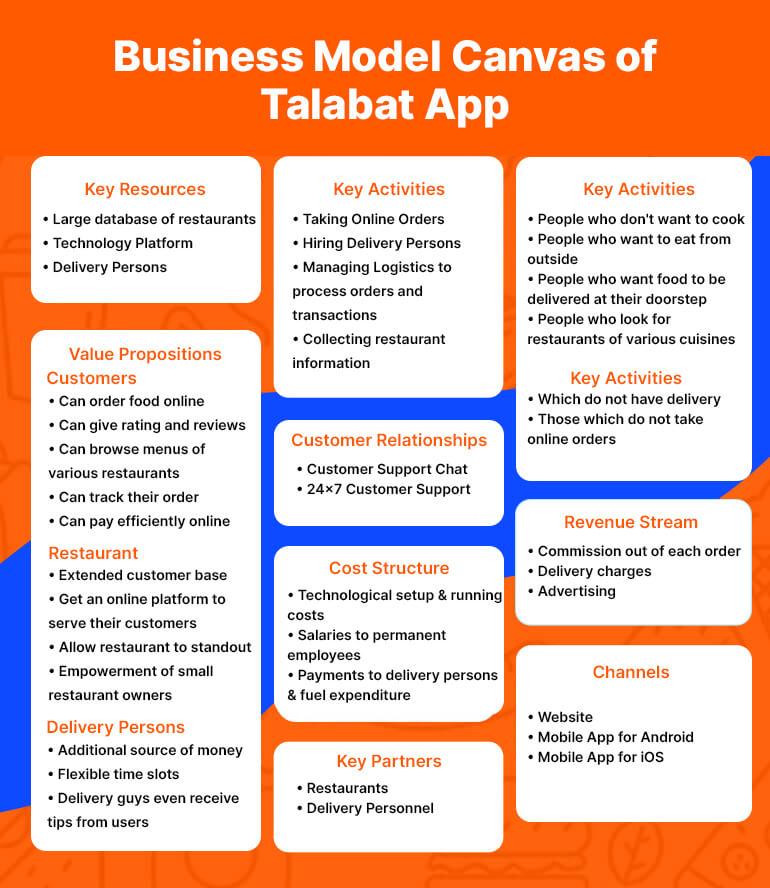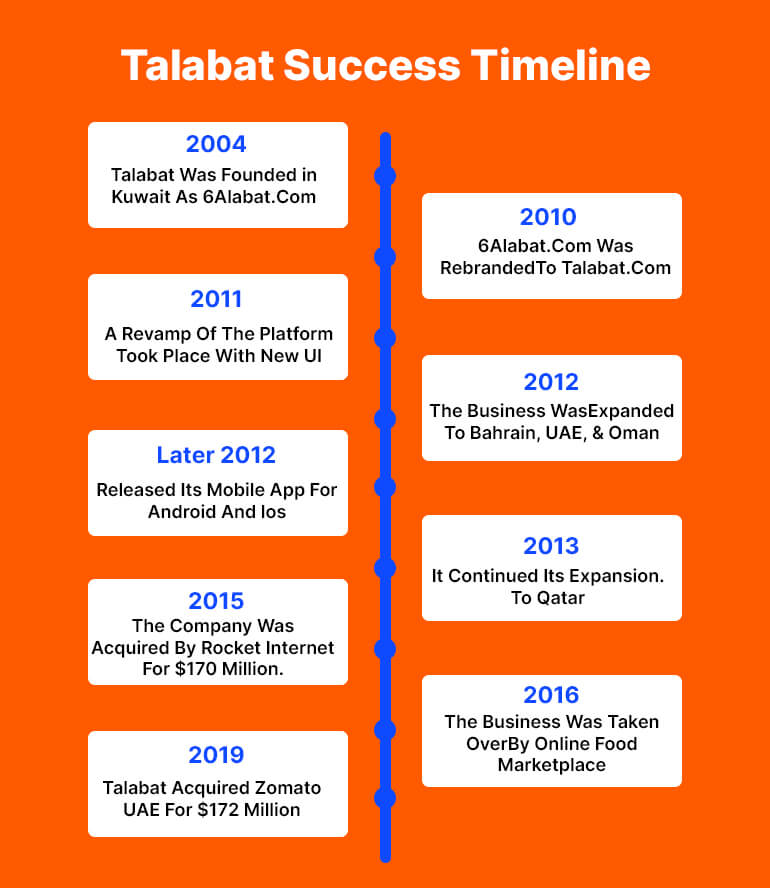The Best Way to Build a Profitable Food Delivery Business Like Talabat

The Gulf is seeing a growing number of diners use apps on their smartphones to speed up meal delivery, a trend that is expected to accelerate as technology redefines the food industry. A report by Alpen Capital indicates that more than 80 per cent of food businesses in the GCC are listed on food delivery apps, while 60 per cent of consumers order food using apps. People buy food online mostly due to the convenience of online shopping and their busy lifestyles.
There seems to be a lot of interest in these apps and funding is pouring into food tech rather than physical food outlets. Let's be honest here. We all lead a busy lifestyle dancing to the tunes of a very hectic schedule. How many of us have time to cook food at home? Forget cooking, we do not even have the time or patience to plan a simple meal. The convenience of a hot, ready-to-eat meal that ordering online provides is therefore very attractive.
Statistics predict that food consumption will rise by 3.3 percentage in the GCC in the next five years, with Saudi Arabia and Oman being the most prominent food consumers in the region. This demand is driven by a growth in the population, an influx of tourists particularly in Qatar with the World Cup set to happen this year, an increasing number of international visitors, and many other factors.
Food delivery services have exploded in the region following the entry of firms such as Talabat. The Food and Beverages industry is redefining itself in the GCC as more and more millennials are more tech-savvy and value convenience and easy access to information as well as the quality of service.
How Did Talabat Begin?
A couple of years back in Kuwat, in 2004 to be precise, things weren’t as convenient as they are now. If anyone still remembers, we used to have those internet connections that would growl and grumble and it took almost forever to establish a connection.
Delivering food on Talabat Kuwait in those days meant taking a customer's order, placing and confirming the order with the restaurant over the phone, updating the customer, picking up the food, and then driving around trying to locate the customer's residence. Fast forward to 2022, Talabat now delivers hundreds of millions of restaurant orders, grocery items, and a wide range of other products including health and wellness products to their customers across the MENA (the Middle East and North Africa). They have come a long way from their humble beginnings in 2004 and now provide delivery services to people living in Bahrain, Egypt, Jordan, Kuwait, Oman, Qatar, and UAE
Business Model of Talabat

Talabat lists on-demand restaurants and organizes the delivery of food items in collaboration with on-demand delivery partners. Talabat's business model is solely focused on providing hyperlocal, on-demand food delivery services. With Talabat, food lovers can connect with restaurants using revolutionary technology. This benefits the company as well as its restaurant partners.
Users can access Talabat online through its website and via its mobile app. The service enables urban foodies to order meals online from their favourite restaurants. Restaurants that can't afford marketing can utilize the services of apps like Talabat to gain a wider customer reach.
Customers can view their orders after adding items to their cart and placing an order. The user can also contact the delivery man to inform him of the address. Address and location are taken at the point of order, but if the customer needs some order-related information, it can be obtained.
Who are Talabat's target customers?
Talabat ‘s main customers are the people who want to order food from restaurants nearby and want their food delivered to their doorstep. Talabat allows its users to purchase items from food stores, gift shops, flower shops, and more.
Revenue Model of Talabat
Here are some of the major avenues from which Talabat earns money.
- Commissions
Talabat charges a fee of 15 % to 25 % on the restaurant’s order bill. Talabat is consistently trying to get Talabat restaurants to join its brand. In addition to increased exposure, restaurants will often see their commissions reduced by 5% to 10%. Talabat enforces it vigorously because the impact is greater than the reduction in business.
The commission percentages are dependent on different factors, such as order frequency, restaurant location, Talabat's reliance on the restaurant, percentage of competition, penetration into a new town, and so on.
- Delivery Charges
The Talabat platform has no minimum order delivery requirement, so it often receives orders under all caps. Logistics costs are therefore higher per order. As Talabat became more successful in the market, it charged small delivery fees (depending on the region and the area). During periods of heightened demand, storms, or special occasions, Talabat charges a premium for delivery. By doing so, consumers will be more likely to buy items for amounts greater than the minimum delivery limit.
- Advertising
Talabat generates advertising revenue through two models - banner ads and priority listing of restaurants. Local restaurants are promoted and displayed via its app and website. Based on the visibility of the restaurant's ad, different regions on the page differ in priority levels. Increased visibility is expected to generate revenues for the restaurants.
What Talabat does is give its customers a list of available restaurants. By paying a premium to have priority listing, the restaurant generates income. In return, the restaurant pays a higher listing fee.
New Features and Functionalities That Enhance Talabat App's Popularity
If your initial idea was a success doesn’t mean you get to sit idle watching it build itself into a profitable business. The creators of Talabat continued to enhance the functionalities and features of the application to evolve with the latest trends and user preference patterns. Like the Swiggy app in India, Talabat also introduced new features that would improve customer experience.
- What is Talabat Mart?
Talabat launched Talabat Mart, the company’s Q-commerce (Quick Commerce) concept store. Talabat Mart promises to deliver groceries to customers within 30 minutes of the order being placed at any time of the day. By utilizing the dark store concept, Talabat aims to improve the lives of its consumers through consistent delivery times, a wide variety of choices, and a seamless ordering experience.
- What is Talabat Go?
As a Talabat Go customer, you can enjoy faster, more trackable deliveries. It's the perfect solution if you're in a hurry and need to know where your order is. You can view restaurants that are part of GO by selecting GO when searching for nearby restaurants.
Why is Talabat Successful?

Talabat has been able to thrive in the e-commerce sector due to its effective strategies of scanning and adapting to the dynamic market locally and globally. Talabat adapted a marketing strategy which led to its popularity and success.
- Products
Through Talabat's significant customer base, it was able to analyze the needs and wants of the target audience, such as understanding what is the most in-demand food item in the GCC and nearby areas, and the altered preferences of customers. To combat failures in the marketplace and introduce a sense of "deliberate scarcity" into its product offerings, Talabat carefully selects its products.
- Price
Whether it is an online service delivery business or not, price is one of the most significant factors in the success of each business. Talabat's pricing strategy entails a market-based approach, which enables it to achieve a balance between cost-effectiveness and overpricing.
- Location
Talabat launched its first cloud kitchen in UAE. Its choice of this location is crucial in terms of operational efficiency. An operation's location directly impacts its costs and ability to serve customers (and therefore its revenue). Once you have made a location decision, it is usually hard and expensive to reverse it.
How To Build An App like Talabat
A reference application can be very useful to help you realize your goal and build an app that will stand out from the crowd.

Technology Stack Used in Talabat App Development
The tech stack chosen to develop your food delivery app will depend on the platform, the features, and other app requirements.
- Front-End Development: CSS, JavaScript, WebAssembly, HTML
- Backend Development: Languages, frameworks, web servers, database management systems
- Android Development: Kotlin, Java, Android Studio, Android SDK
- iOS Development: Objective-C, Swift, Apple Xcode, iOS SDK
- Hybrid Development: PhoneGap, Ionic
- Payment: Stripe, Braintree, PayPal
- User Location Finding Google Places API
- Direction Finding Google Maps, MapKit
- Registrations: Gmail SDK, Facebook SDK
- Storage: AWS, Azure, Google
- Analytics: Google Analytics, FireBase
Talabat Food Delivery App Development Cost
The cost of creating an app like Talabat depends largely on what features you want to include. A basic food delivery app can cost around $12,000 to $20,000 whereas a more complex solution can cost more than $40,000.
| Region: | Average Cost |
|---|---|
| ----------- | ----------- |
| USA | $50 to $250 per hour |
| Eastern Europe | $30 to $150 per hour |
| India | $10 to $80 per hour |
| ----------- | ----------- |
| Feature: | Time Taken | Average Cost |
|---|---|---|
| ----------- | ---------------- | ----------- |
| Technical Documentation | 40 Hours | $1000 to $2000 |
| UI/UX Design | 60 Hours | $1500 to $3000 |
| Front-End & Back-End Development | 400 Hours | $10,000 to $20,000 |
| MVP Testing | 80 Hours | $2000 to $4000 |
| InMaintaining and Fixing Errors | 40 Hours | $1000 to $2000 |
| ----------- | ----------- |
The app development cost also varies for different platforms. For example, the price of an app developed for Android will vary from that of an app designed for iOS. A full-stack application development service in India provides a mobile app that allows on-demand ordering of food for between $10 and $80 per hour.
Conclusion
As an entrepreneur, investing in an app like Talabat or Deliveroo can lead to numerous growth opportunities for your business. The current trend promises that the on-demand food delivery sector will continue to see exponential growth. All you need is an innovative strategy that evolves with the market trend. Safety and convenience are the current players driving customer preferences. Let us know if you have an idea that you would like to see turn into a successful business.
FAQs
How much does it cost to develop an app like Talabat?
The cost of developing an app like Talabat can range from $25,000 to $40,000 depending on the features and functionality that you require.
Why build a food delivery app like Talabat in UAE?
Building a reputable app like Talabat has a lot of benefits.
- Win your customers by delivering customized services
- Order on the app, and avoid phone calls.
- Requires less investment and can be scaled up depending on the requirement.
- Build an innovative solution to tap into a promising market.
- Hassle-free payment
Why build a food delivery app like Talabat in UAE?
Building a reputable app like Talabat has a lot of benefits.
- Win your customers by delivering customized services
- Order on the app, and avoid phone calls.
- Requires less investment and can be scaled up depending on the requirement.
- Build an innovative solution to tap into a promising market.
- Hassle-free payment
How does the Talabat app work?
- Select from the list of nearby restaurants shown on the app.
- Browse through the menu of the preferred restaurant.
- Customize your meal according to what you want.
- Add the product to cart and checkout.
- Choose preferred mode of payment and make the payment.
- Track your order.
- Rate or leave feedback on the app based on your experience.
How to develop a food delivery app like Talabat?
- Step 1: Perform market research.
- Step 2: Choose a business model.
- Step 3: Choose the features and functionality of your application.
- Step 4: Leverage the right technology stack based on features, app complexity, and platform.
- Step 5: Choose the most feasible development solution.
Request a Quote
Categories
Popular posts
Best Practices for Software Product Engineering Every CTO Should Implement
2023-14-18How to Build Your Own On-Demand Carpooling App Services?
2023-08-25How to Start an On-Demand Fuel Delivery Business: A Comprehensive Guide
2023-07-28Empowering Miners: How Fleet Management Apps are Transforming the Mining Industry?
2023-07-21A Complete Guide to Develop a Food Delivery App for Restaurants in 2023
2023-07-08Mobile Apps Transforming the Travel Industry: A Game-Changer in Travel Planning and Experience
2023-07-07
